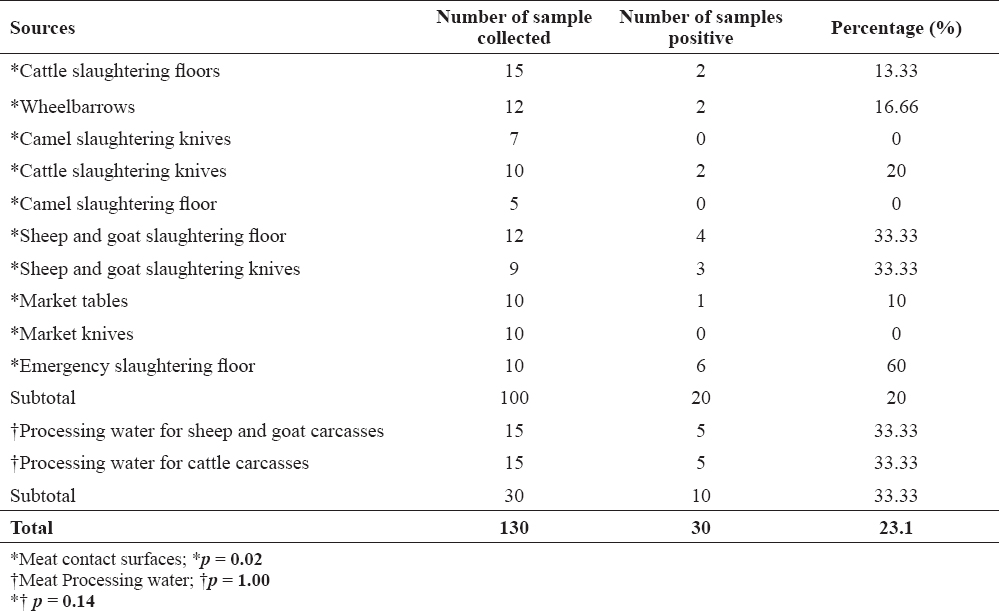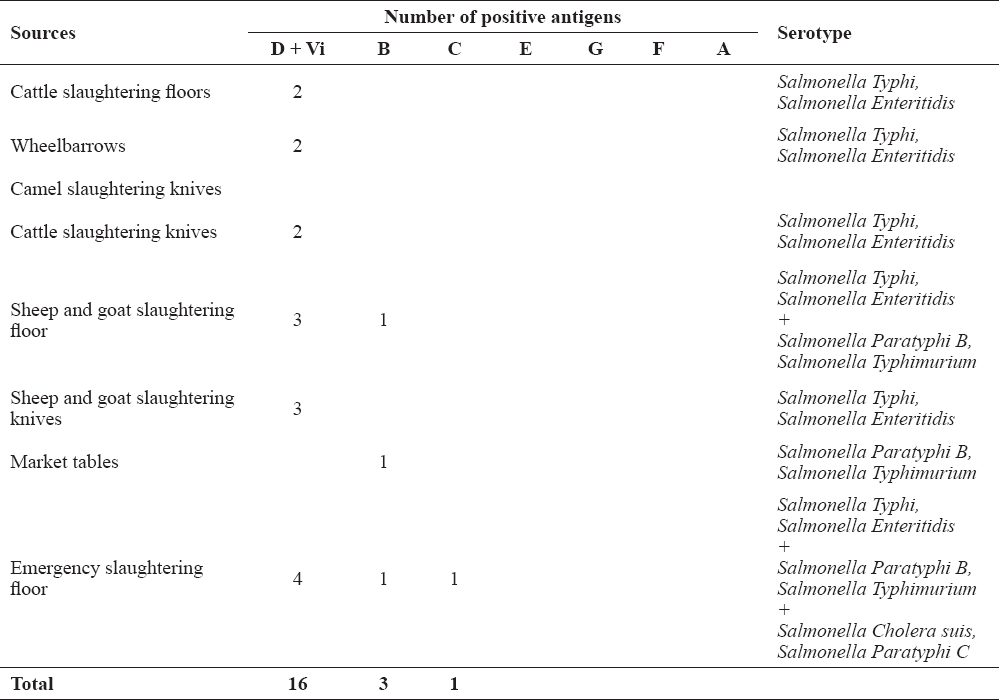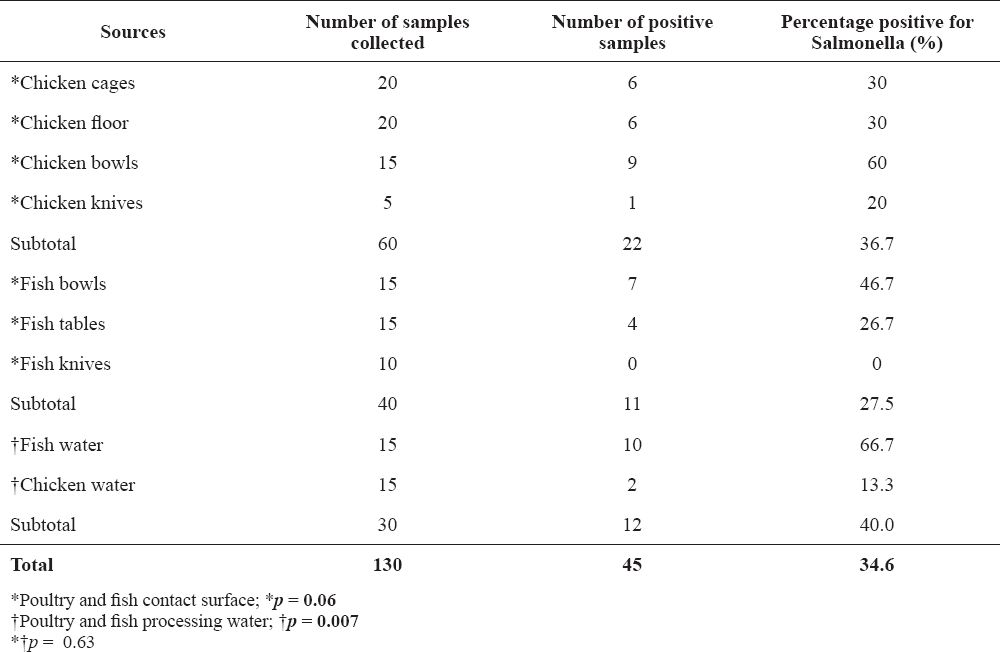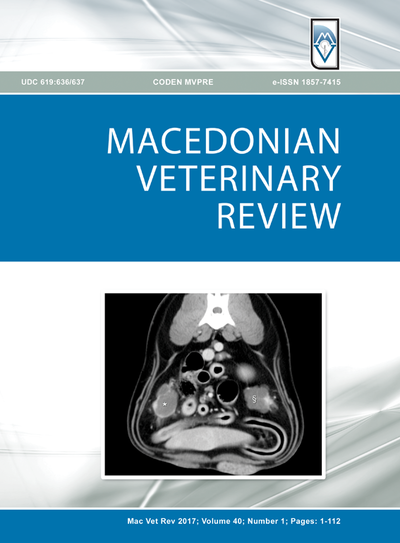INTRODUCTION
There has been a significant interest in studying the biology of Salmonella because these bacteria are among the leading causes of foodborne illnesses around the globe (1). Over 2500 known serotypes, of Salmonella have been isolated so far. However, Salmonella enteric serovars Enteritidis and Typhimurium are the most frequently associated with food poisoning leading to illness in humans when these organisms are ingested through raw or improperly processed food (3).
In many industrialized countries, the incidence of salmonellosis in humans and the prevalence of Salmonella in many food products have increased significantly over the last twenty years (2). This bacterium is broad host-spectrum, and can be isolated from a wide range of animal species, including birds and reptiles (4). The animals usually are healthy carriers, and contaminated food plays an important role in the epidemiology of salmonellosis. Salmonella can survive for a long time in the environment. Humans are usually infected through consumption of contaminated foods of animal origin (2). In human and animal cases it is an enteric disease of varying severity, usually involving diarrhea (4).
Meat contact surfaces serve as sources of food contamination, and typical food contact surfaces in Nigerian retail markets include the meat handler’s hands and outer garments, slaughtering hall, wooden tables (abattoir and market), cutting knives, weighing scales, water holding utensils such as metal buckets and plastic containers, wheelbarrows and vehicles for conveying meat (5, 6, 7). Recently, it has been indicated that, many bacterial species are indigenous part of seafood, but they can also be found on the food processing surfaces, where they can subsequently contaminate the products. (8)
During the processing of poultry carcasses, microbial contamination inevitably occurs as a consequence of the processing procedures used. At each stage of the process, ample opportunity exists for contamination of the carcass by microorganisms from the processing plant or by cross-contamination from other birds (2).
Sanitary monitoring of food contact surfaces is a powerful tool for the detection of risks associated with the production, manufacture and consumption of food (9). This study evaluated the level of Salmonella contamination on meat contact surfaces in the study area.
MATERIAL AND METHODS
Study area
Sokoto is the capital of Sokoto State, located at 13°N and longitude 30°E and 90°E in the North Western part of Nigeria. It lies roughly between longitude 30°E and 15°E of Greenwich and between 4°N and 14°N of the equator. It covers approximately an area of 56,000 square kilometers (10). Sokoto metropolis is located in the Sudan savannah zone grass vegetation, sandy soil and humidity, which is usually below 40% except in few wet months when it approaches 60% (11).
Sampling procedure
Samples were collected from contact surfaces and processing water in Sokoto metropolitan abattoirs, poultry processing units and fish markets. Contact surfaces comprise of slaughtering halls, wooden tables, cutting knives, weighing scales, water holding utensils such as metal buckets and plastic containers, wheelbarrows and vehicles for conveying meat. The Compendium of methods for the microbiological examination of foods (12) was used, with 10-15cm2 surface area of each contact surface was used for taking swabs from the contact surfaces. A total of 100 meat contact surfaces, 30 samples of meat processing water, 100 poultry meat and fish contact surfaces and 30 samples of processing water were collected from ruminant abattoirs, poultry processing units and fish markets respectively. The sample swab head was rinsed in sterile 10 ml of 0.1% buffered peptone water and transported to the Veterinary Public Health and Preventive Medicine of Usmanu Danfodiyo University, Sokoto for isolation and identification.
Media preparation
Enrichment was done with Rapapport Vassiliadis Soya broth (RVS Himedia™). All the media used for bacterial culture were prepared in the laboratory according to the manufacturers’ instructions and include, Salmonella Shigella Agar (SS Himedia™), Triple Sugar Iron (Antec Diagnostic Products™UK), Urease Agar (Oxoid LTD, London), Simon’s citrate Agar (Himedia™), Nutrient Agar (Oxoid LTD, London).
Bacterial isolation and identification
A loopful of each broth inoculum was streaked on Salmonela Shigella agar and the culture plates were incubated at 37°C for 24-48 hrs, while growth was observed for typical colonial morphology of Salmonella (13). Standard biochemical tests were used to identify Salmonella among suspect isolates using conventional methods. Test conducted include Triple sugar iron (TSI), urease test, oxidase test, Citrate test, Indole test. Isolates with colorless transparent, dark centered colonies were identified as Salmonella spps. On bio-typing isolates that were negative to TSI, Urease, Indole and Citrate were considered to be Salmonella.
Sero-grouping
Positive isolates for cultural identification and bio-typing were subjected to sero-grouping using Salmonella Sero-Quick Group screening kit obtained from Staten’s Serum Institute (SSI), Copenhagen, Denmark for identifying Salmonella isolates according to the sero-group level. The kit includes anti-sera against the most common sero-groups of Salmonella A-G and the capsule antigen Vi. The sero-group A and the Vi antigens are not common but expressed by the clinical important serotypes S. Typhi 9, 12{Vi};d) and S. Paratyphi {1, 2, 12;a}
Data analysis
The data obtained from this study was entered and stored in Microsoft Excel® 2010 using descriptive statistics, and they were analysed using Graph Pad Prism. Categorical variables were evaluated using Chi square and Fishers exact test to check for association between variables and percentage positive of Salmonella. Values of p <0.05 at 95% confidence interval were considered significant.
RESULTS
As indicated in Table 1, out of one hundred (100) samples obtained from the meat contact surfaces 20 (20%) were found to be positive for Salmonella. Emergency slaughtering floor had the highest number of positive isolates 6 (60%), while no isolates were recovered from camel slaughtering floor, slaughtering knives and knives used at the retail market (0%). There is significant difference (p= 0.02) between food contact surfaces in the abattoir and Salmonella contamination. Thirty (30) processing water samples were collected and 10 (33.3%) were positive for Salmonella. Three serotypes of Salmonella from meat contact surfaces were isolated which are Serotype D+Vi, Serotype B and Serotype C 1 (Table 2). Serotype D+Vi is the most common isolate among the three isolates.
Table 1. Distribution of Salmonella spp. on selected meat contact surfaces and processing water in Sokoto, Nigeria
Table 2. Sero-grouping of Salmonella spp. isolates from meat contact surfaces and processing water in Sokoto, Nigeria
As indicated in Table 3, a total of 45 positive sample of Salmonella (34.6%) were obtained from food contact surfaces and processing water in poultry and fish markets. The chicken and fish bowls had the highest number of positive isolates 9/15 (60.0%) and 7/15 (45%) respectively, while chicken knives had the lowest 1/5 (20 %). However, there is no statistical significance differences among the contact surfaces (p= 0.06). The fish processing water showed 66.7% of Salmonella isolates, while the poultry processing water had 13.3% positive isolates. There is a statistical significant difference between poultry and fish processing water (p=0.007). Out of 45 positive isolates that were subjected to sero-typing, 39 isolates tested positive to the D sero-group (Salmonella entricaserotype Enteritidis) and 12 out of these D sero-group were the virulent Vi antigen (Salmonella Typhi). While the remaining 6 tested positive to the B sero-group (Salmonella enteric serotype Typhimurium) (Table 4).
Table 3. Distribution of Salmonella spp. on selected meat contact surfaces and processing water in poultry and fish market in Sokoto, Nigeria
Table 4. Sero-grouping of Salmonella spps isolates from meat contact surfaces and processing water in poultry and fish market, Sokoto Nigeria
DISCUSSION
Good Hygienic Practices (GHP) are essential to ensure food safety. They are required by law under national and international food hygiene regulations and are frequently considered as pre-requisites to food safety systems based on Hazard Analysis and Critical Control Point (HACCP). Compromising good hygiene almost always results in establishment and proliferation of pathogenic as well as spoilage microorganisms on the processing and storage food contact surfaces (9). In this study, we used conventional bacterial culture isolation and bio-typing, to detect Salmonella contamination of meat, poultry and fish contact surfaces and processing water. Serological evidence of the strains that served as source of contamination was also identified. High number (23.1 %) of food contact surfaces and processing water in abattoirs in the study area showed Salmonella contamination. This is partly due lack of adherence to good hygienic practices in the processing of meat and largely due to poor animal husbandry and management practices on the farms. Contamination of surfaces may also occur from the water used in washing and processing the meat, because there is no adequate provision of good quality water in the abattoir. In a recent study conducted on the bacteriological quality of raw meat displayed for sale at Sokoto, Nigeria, 8.2 % of these surfaces were contaminated with Salmonella (14). Higher prevalence have been reported from several studies, including 26% in meat products (15) and 23.3% prevalence (16) in Egypt.
Poultry contact surfaces showed 36.7 % (22/60) Salmonella contamination, while chicken knives have the lowest 1/5 (20 %) level of contamination among other poultry contact surfaces. However, the prevalence is less when compared with the report of Ishola and Taiwo (17) that showed 66.7% on chicken knives among frozen poultry retailers in Oyo State, Nigeria. This contamination may have resulted because the knives used are not been changed nor rinsed for the entire day’s operation, hence the higher microbial level due to the accumulation of microorganisms and likely, biofilms on their surfaces. Cleaning and sanitation of food-processing surfaces with short intervals was proposed as an effective approach to prevent or limit biofilms formation (18).
The high number of Salmonella isolates (66.7%) and (13.3%) obtained from the fish and meat processing water respectively is alarming and could be a potential source of contamination to the meat and fishes. This could be due to the fact that water used in the processing of meat is sourced from nearby streams and wells that have possibly been contaminated with municipal sewage.
Considering that Salmonella is not a component of the normal fish flora, this indicates that contamination of fish is a result of fecal contamination through polluted water, infected food handlers or cross-contamination during production or transportation (19). Therefore it is likely that water may have acted as a vehicle of transmission of this microorganism. This study revealed that Salmonella Typhi was the most frequent isolate. However, in the recent epidemiological studies was indicated that S. Enteritidis and S. Infantis are most frequently isolated from poultry flocks in southern Bačka and Srem region in Serbia (1). Salmonella Typhi is a human pathogen, having high levels of it could be an indication of fecal contamination of these surfaces and processing water. Contamination of these surfaces may be from the butchers, which could arise from the use of ungloved hands during dressing and processing of the carcass in the slaughtering hall. Also, the footwear’s used by the butchers could serve as a vehicle for faecal contamination, because dressing and processing of carcasses takes place on the open floor in the slaughtering hall.
Salmonella species such as Salmonella Typhi is a bacterium that causes typhoid fever (enteric fever), an acute, life-threatening febrile illness (20). The disease is a cause for concern and a major public health problem in developing countries; especially in Nigeria due to poor sanitary conditions, lack of inadequate portable water, weak regulatory systems, lack of financial resources to invest in safer equipment and lack of education of meat-handlers (20). It is mainly transmitted through food or drink or water, contaminated with urine or faeces of infected people or a chronic carrier (20, 21).
CONCLUSION
Human Salmonella as identified in the study posed a major public health concern in the study area. The competent authorities for the hygiene in the abattoirs and market need to awaken to their responsibility and raise the public awareness about standard operating hygienic practices.
CONFLICT OF INTEREST STATEMENT
The authors declared that they have no potential conflict of interest with respect to the authorship and/or publication of this article.










